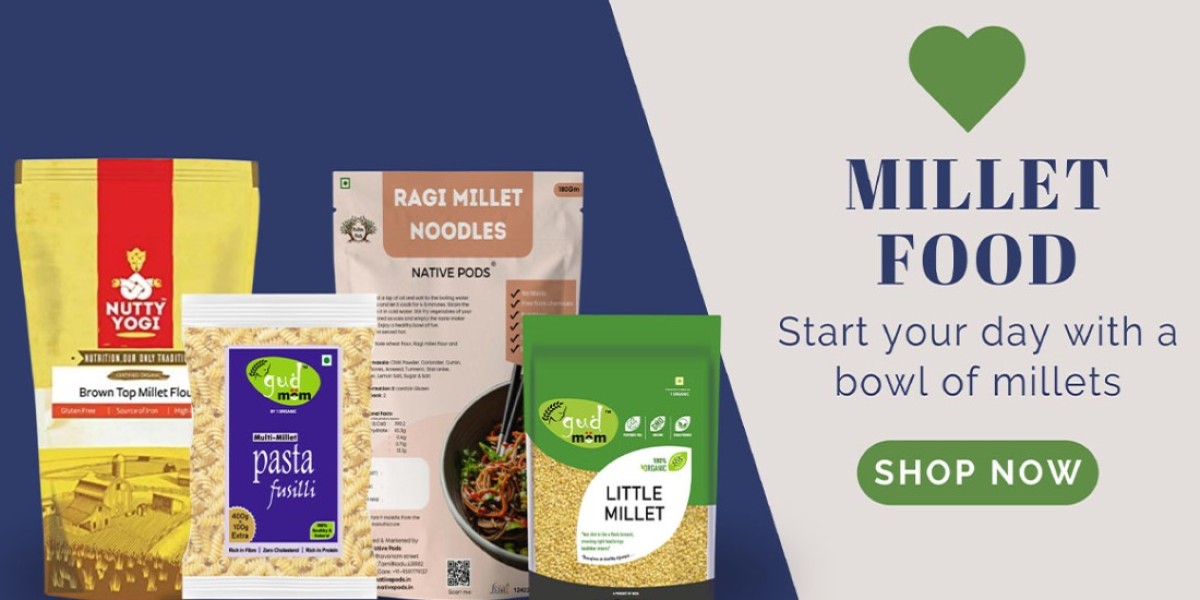These ancient grains, which have been cultivated for thousands of years, are now experiencing a resurgence as more people recognize their nutritional value, environmental benefits, and culinary versatility. In this blog, we will explore the history of millets, their health benefits, their role in sustainable agriculture, and how they are making a modern comeback in kitchens around the world.
## The History of Millets
Millets are a group of small-seeded grasses that have been cultivated for food for thousands of years. They were some of the first grains to be domesticated and have played a crucial role in the diets of many ancient civilizations.
### Origins and Early Cultivation
Millets are believed to have been first domesticated in Asia and Africa around 10,000 years ago. The earliest evidence of millet cultivation has been found in the ancient sites of China and India, where these grains were a staple food. In Africa, millets were widely grown in regions such as Ethiopia and Nigeria.
### Spread and Cultural Significance
As civilizations expanded, so did the cultivation of millets. They spread to Europe and other parts of Asia and became an essential part of many traditional diets. In Europe, millets were grown extensively during the Middle Ages before being largely replaced by other grains such as wheat and barley. Despite this, millets continued to be an important food source in many parts of Africa and Asia.
## Nutritional Powerhouses: The Health Benefits of Millets
Millets are often hailed as superfoods due to their impressive nutritional profile. They are rich in essential nutrients, gluten-free, and have numerous health benefits.
### Rich in Nutrients
Millets are packed with vitamins and minerals, including magnesium, potassium, phosphorus, and iron. They are also a good source of B vitamins, such as niacin, thiamin, and riboflavin. Additionally, millets are high in dietary fiber, which is essential for digestive health.
### Gluten-Free Alternative
For those with gluten intolerance or celiac disease, millets offer a valuable alternative to wheat and other gluten-containing grains. Their naturally gluten-free composition makes them suitable for a variety of dietary needs without sacrificing nutritional value.
### Health Benefits
The consumption of millets has been linked to several health benefits:
- **Heart Health**: The high magnesium content in millets helps to regulate blood pressure and reduce the risk of heart disease.
- **Diabetes Management**: Millets have a low glycemic index, which means they release sugar slowly into the bloodstream, helping to manage blood sugar levels.
- **Digestive Health**: The dietary fiber in millets aids in digestion and prevents constipation.
- **Weight Management**: Millets can help with weight management by providing a feeling of fullness, reducing overall calorie intake.
## Sustainable Agriculture: Millets and the Environment
In addition to their health benefits, millets are also valued for their environmental benefits. They are a hardy crop that can be grown in adverse conditions, making them an excellent choice for sustainable agriculture.
### Drought-Resistant Crop
Millets are known for their ability to thrive in dry and arid regions with minimal water requirements. This drought resistance makes them a vital crop in areas prone to water scarcity, particularly in parts of Africa and Asia where water resources are limited.
### Low Input Requirements
Unlike many other crops, millets require minimal fertilizers and pesticides. This reduces the environmental impact of their cultivation and lowers the cost for farmers. Their ability to grow in poor soils without the need for extensive chemical inputs makes them a sustainable choice for agriculture.
### Biodiversity and Crop Rotation
Millets play a crucial role in maintaining agricultural biodiversity. They are often used in crop rotation systems, which help to improve soil health and reduce the incidence of pests and diseases. By including millets in their crop rotation, farmers can enhance the resilience of their farming systems.
## Culinary Versatility: Millets in Modern Kitchens
One of the reasons for the modern comeback of millets is their culinary versatility. These grains can be used in a wide range of dishes, from traditional recipes to innovative culinary creations.
### Traditional Recipes
Millets have been a staple in traditional cuisines for centuries. In India, dishes such as **Ragi Mudde** (a type of millet porridge) and **Bajra Roti** (millet flatbread) are still popular. In Africa, millets are used to make **Injera** (a type of flatbread) and **Ugali** (a thick porridge).
### Modern Recipes and Innovations
In contemporary kitchens, chefs and home cooks alike are experimenting with millets in various forms. Millet flour is used to make gluten-free bread, pancakes, and muffins. Whole millets can be cooked and used in salads, soups, and stews. Their mild flavor and slightly nutty taste make them a versatile ingredient that can be incorporated into both savory and sweet dishes.
### Millet-Based Products
The growing interest in millets has also led to the development of millet-based products. Millet flakes and puffed millet are now available as breakfast cereals, providing a nutritious alternative to traditional cornflakes and rice puffs. Millet pasta and noodles offer a gluten-free option for pasta lovers.
## The Future of Millets
As the world faces challenges related to food security, climate change, and health, millets offer a promising solution. Their resilience, nutritional benefits, and environmental advantages make them an important crop for the future.
### Promoting Millet Cultivation
To ensure the continued growth of millet cultivation, it is essential to support farmers through education and access to resources. Governments and agricultural organizations can play a crucial role in promoting the benefits of millets and providing incentives for farmers to grow these grains.
### Raising Awareness and Consumption
Increasing awareness about the health and environmental benefits of millets can encourage more people to include them in their diets. Public health campaigns, cooking demonstrations, and nutritional education programs can help to spread the word about these ancient grains.
### Research and Development
Investing in research and development is key to improving millet cultivation and utilization. This includes developing new millet varieties that are even more resilient and nutritious, as well as finding innovative ways to incorporate millets into processed foods and beverages.
## Conclusion
Millets, once a staple of ancient civilizations, are making a significant comeback in the modern world. Their impressive nutritional profile, environmental benefits, and culinary versatility make them a valuable addition to our diets. As we look towards a future where sustainable agriculture and healthy eating are paramount, millets offer a promising solution. By promoting their cultivation and raising awareness about their benefits, we can ensure that these ancient grains continue to thrive and nourish us for generations to come.
Incorporating millets into our diets not only supports our health but also contributes to a more sustainable and resilient food system. Whether through traditional recipes or modern culinary innovations, millets have proven that they are more than just a historical footnote—they are a vital part of our future.







